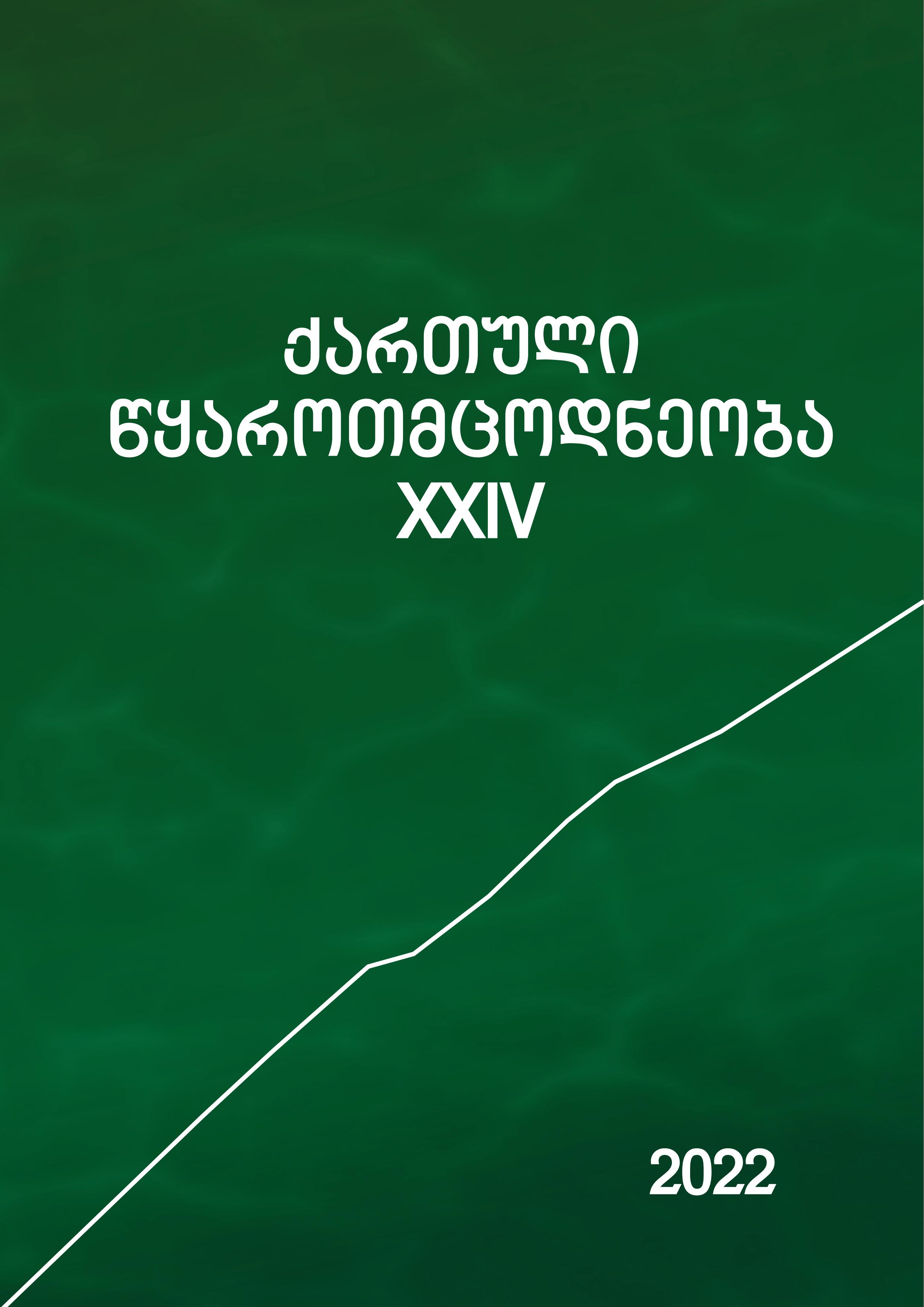An Inscription of the 16th Century, Newly Revealed in Gorijvari Monastery of St. George, Akhshni, with Information about Construction of a Refectory and Enclosure Wall by Gurzi Liparitiani (Several Issues Fromthe History of the Feudal House of the Liparitianis, Gorijvari Monastery of Akhshni and Pre-Chancel Cross of Gorijvari)
Abstract
In 2021, the rehabilitation work was carried out on the two-story bell tower with crypt which is a part of
the architectural complex of Gorijvari located in the vicinity of the village of Akhshni, Akhmeta Municipality,
Kakheti region. A five-line Georgian lapidary inscription executed in Mkhedruli script, combined with Nuskhuri
graphemes, was found during the rehabilitation work in a layer of loose stone and gravel accumulated at the
entrance to the bell tower. By the end of the 19th century, the slab with the above inscription was still embedded
above the entrance of the bell tower. Text of the inscription is first time published in this paper since it has not been published before.
According to palaeographic criteria, the newly discovered inscription of Gorijvari dates to the 16th century, it was commissioned by certain Gurzi Liparitiani, and is related to the construction activity. From the point of
view of the content, two parts can be distinguished in the inscription: 1. In the first part of the inscription, Gurzi
appeals to God and “Saint George of Gorijvari” and reports that thanks to their assistance he built a refectory
and an enclosure wall; and 2. In the second part of the inscription, Gurzi asks God and “St. George of Gorijvari” for a long lifespan on Earth, and an eternal afterlife.
Gurzi Liparitian, mentioned in the Gorijvari inscription, belonged to the feudal family of the Liparitians
from Odishi. He carried out activities in the second half of the 16th century and beginning of the 17th century.
Gurzi was the son of Giorgi Liparitiani, a well-known historical person. Gurzi had sisters: the prominent scribe Mana (Mania) Liparitiani and Queen Tamar Laparitiani, the spouse of King Giorgi X of Kartli. Gurzi was the last
head of the Feudal House of Liparitiani. Ater his death, the Liparitiani lineage ceased to exist.
It is known from the scholarly literature that in the years 1597-1601, Levan – grandson of King Aleksandre II
of Kakheti, an infant son of the dynastic Prince of Odishi Manuchar I Dadini and of Queen Nestan-Darejani (she died when giving birth to Levan), grew up at the court in Kakheti. Later, Levan became the dynastic Prince of
Odishi under the name of Levan II Dadiani. It is possible that Gurzi Liparitiani, mentioned in the inscription of
Gorijvari, was at the court in Kakheti during this period. It seems that he was included in the retinue of Levan II Dadiani and was sent from Odishi to Kakheti to accompany the young prince on the order of Manuchar I.
During his stay in Kakheti, Gurzi Liparitiani carried out large-scale construction work in the architectural
complex of Gorijvari. He built or renovated two buildings there: 1. a refectory, the location of which is still
unknown, and 2. an enclosure wall, which has come down to us just partially. In addition, on Gurzi’s order an
inscription was carved on a slab with the text reflecting his founding activities. The slab with the inscription
was installed in the wall either of the refectory, or in the enclosure wall, or in the wall of an architectural
structure linking them.
Results of the study of the newly revealed inscription of Gurzi Liparitiani by means of historical and
source study methods are presented in the paper. The following issues have been analyzed in a new way:
1. Activities of the members of a Feudal House of the Liparitianis in 16th-17th centuries; 2. Issues of history of the Gorijvari monastery of Akhshni in the 16th century; 3. The history of the Gorijvari pre-chancel cross in 16th-18th centuries, etc.
Downloads
Published
Issue
Section
Categories
License

This work is licensed under a Creative Commons Attribution-NonCommercial 4.0 International License.

